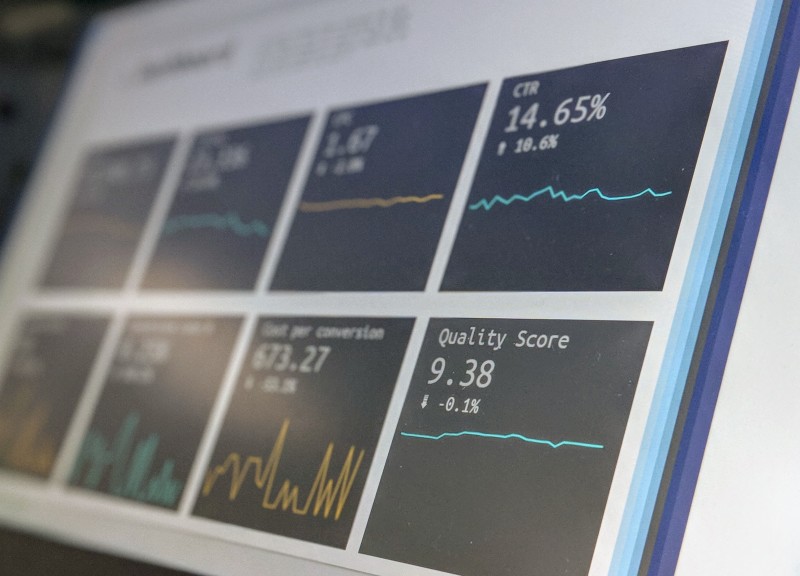In today's digital age, eCommerce has become an essential part of every business's growth and success. With ever-increasing competition, having a well-defined roadmap outlining your business's objectives, goals, and strategies is crucial.
An eCommerce roadmap is a comprehensive plan that guides your business through every step of the eCommerce journey, from setting up your online store to scaling your business. A well-defined eCommerce roadmap can help you increase your online sales, improve customer engagement, and build a strong online brand presence.
In this article, we will be sharing some of the best practices and strategies for building an effective eCommerce roadmap that will help you achieve success in the digital world. Whether you're just starting out or looking to scale your existing eCommerce business, our blog will provide you with the insights and knowledge you need to succeed in the world of eCommerce. So, let's get started!

Setting eCommerce goals and objectives
When creating an eCommerce roadmap, it's important to start by setting SMART goals for your business. SMART goals are Specific, Measurable, Achievable, Relevant, and Time-bound. By setting SMART goals for your eCommerce business, you can create a roadmap that's focused, achievable, and effective in helping you achieve your desired outcomes. Remember to regularly review your goals and adjust your roadmap as needed to stay on track and achieve success.
Here’re some examples of SMART goals for an eCommerce business:
Increase website traffic by 25% in the next 6 months through SEO and content marketing.
Increase conversion rate by 10% in the next quarter by optimizing the checkout process and offering more personalized product recommendations.
Expand the product line by adding 10 new products within the next 3 months, based on customer feedback and market research.
Aligning goals with business objectives and customer needs is essential to the success of an eCommerce business. It helps you stay focused, competitive, innovative, and efficient while delivering a positive customer experience that drives loyalty and repeat business. Measuring progress and success is an essential part of tracking your eCommerce business's growth and ensuring that you're on track to achieving your goals.
The most common metrics and methods to measure the progress and success of an eCommerce business are Website Traffic, Conversion Rate, Average Order Value (AOV), Customer Lifetime Value (CLV), Return on Investment (ROI), and Customer Satisfaction. In addition to tracking these metrics, it's important to regularly review your eCommerce roadmap and adjust your goals and strategies as needed to stay on track and achieve success. By monitoring your progress and making data-driven decisions, you can ensure that your eCommerce business continues to grow and thrive.

Identifying key performance indicators (KPIs)
The most important KPIs (Key Performance Indicators) for an eCommerce business vary depending on the business's goals. These KPIs can help you monitor your eCommerce business's performance, identify areas for improvement, and make data-driven decisions to optimize your strategies and achieve your goals. To track KPIs for your eCommerce business, you need to collect and analyze data from different sources. By regularly tracking these KPIs and analyzing the data, you can gain valuable insights into your eCommerce business's performance, identify areas for improvement, and make data-driven decisions to achieve your goals.
Here are some of the most common KPIs and how you can track them:
Conversion Rate: This measures the percentage of website visitors who make a purchase, sign up for a newsletter, or take another desired action. A high conversion rate indicates that your website and marketing strategies are effective at turning visitors into customers. You can track conversion rates using tools like Google Analytics, which allows you to set up conversion tracking for specific actions on your website, such as making a purchase or filling out a form.
Average Order Value (AOV): This measures the average dollar amount of each transaction. By increasing your AOV, you can boost your revenue and profitability. You can track AOV by dividing the total revenue generated by the number of orders. This data can be easily collected using your eCommerce platform's reporting tools.
Customer Lifetime Value (CLV): This measures the total value of a customer's purchases over their lifetime with your business. By increasing CLV, you can boost customer retention and increase revenue. You can track CLV by calculating the total value of a customer's purchases over time. This data can be collected from your eCommerce platform's reporting tools, or you can use customer data management software to calculate CLV.
Customer Acquisition Cost (CAC): This measures the cost of acquiring a new customer. By keeping CAC low, you can improve your profitability and ROI. You can track CAC by dividing the total cost of acquiring new customers (such as advertising expenses) by the number of new customers. This data can be collected from your advertising platforms and your eCommerce platform's reporting tools.
Cart Abandonment Rate: This measures the percentage of customers who add items to their cart but do not complete the checkout process. By reducing cart abandonment, you can improve your conversion rate and revenue. You can track cart abandonment rate using analytics tools, which allow you to identify the point at which customers abandon their carts and optimize your checkout process to reduce abandonment.
Return on Ad Spend (ROAS): This measures the revenue generated from advertising efforts compared to the cost of those efforts. By maximizing ROAS, you can optimize your advertising strategies and increase profitability. You can track ROAS by dividing the revenue generated from advertising efforts by the cost of those efforts. This data can be collected from your advertising platforms.
Net Promoter Score (NPS): This measures customer loyalty and satisfaction. You can boost customer retention and generate positive word-of-mouth marketing by improving your NPS. You can track NPS by surveying customers and asking them to rate their likelihood of recommending your business to others. This data can be collected using customer feedback tools or surveys.

Creating an eCommerce roadmap
Creating an eCommerce roadmap involves developing a strategic plan that outlines the steps required to achieve your business goals. Along with that, prioritizing tasks and initiatives is critical for eCommerce businesses because it helps them focus on the most important and impactful activities that will drive growth and success. It is also critical for eCommerce businesses to optimize their resources, time, and impact. By focusing on high-priority activities, businesses can maximize their chances of success and adapt to changing circumstances. Using templates and tools like airfocus can save time, streamline the eCommerce roadmap process, and improve collaboration within your team. By customizing the templates and using pre-built models, you can ensure that your eCommerce roadmap aligns with your business objectives and prioritizes initiatives that will drive growth and success.
The question is, how do you create an eCommerce roadmap? Here are a few key steps:
Define Your Goals: Identify your business objectives and what you want to achieve with your eCommerce business. Set SMART goals.
Conduct Market Research: Research your target market, competitors, and industry trends to identify opportunities and challenges.
Define Your Value Proposition: Identify what sets your eCommerce business apart from competitors and why customers should choose your business.
Develop a Product Strategy: Identify the products or services you will offer and how they align with your value proposition and customer needs.
Define Your Marketing Strategy: Develop a comprehensive marketing strategy that includes your channels, tactics, messaging, and budget.
Develop a Technology and Infrastructure Plan: Choose the technology platforms and tools required to support your eCommerce business, including your eCommerce platform, payment gateway, shipping, and inventory management systems.
Identify Your Team and Resource Requirements: Determine the team members and resources required to execute your eCommerce roadmap, including internal and external resources.
Develop a Timeline and Budget: Develop a realistic timeline and budget for each component of your eCommerce roadmap.
Continuously Monitor and Adapt: Continuously monitor your progress and adapt your eCommerce roadmap as needed based on your KPIs, market changes, and customer feedback.
Iterating and optimizing the eCommerce roadmap
Iterating and optimizing the eCommerce roadmap is essential for ensuring that your business continues to grow and adapt to changing market conditions and customer needs. Continuously iterating and optimizing your eCommerce roadmap is critical for ensuring that your business stays on track and continues to grow. By regularly reviewing KPIs, collecting feedback, prioritizing based on impact, experimenting and testing, adjusting as needed, and continuously learning, you can ensure that your eCommerce roadmap aligns with your business objectives and customer needs.
Customer feedback and data analytics are powerful tools that can help eCommerce businesses identify areas for improvement. By collecting customer feedback, analyzing customer behavior, identifying key metrics, using A/B testing, leveraging machine learning, and prioritizing improvements, you can use customer feedback and data analytics to identify areas for improvement and optimize your eCommerce roadmap for growth and success.
There are plenty of successful examples to demonstrate this approach. For example, Amazon and Airbnb use data analytics to analyze customer behavior and preferences, which helps the company to offer personalized recommendations and improve the customer experience. These successful eCommerce businesses demonstrate the importance of using customer feedback and data analytics to optimize your eCommerce roadmap for growth and success. By prioritizing customer needs and using data-driven insights to guide your decision-making, you can build a successful eCommerce business that meets the needs of your customers and achieves your business objectives.
Conclusion
In conclusion, an eCommerce roadmap is a critical tool for any eCommerce business looking to achieve long-term success. By setting SMART goals, identifying KPIs, prioritizing tasks, and leveraging customer feedback and data analytics, eCommerce businesses can optimize their roadmap for growth and success. An eCommerce roadmap allows businesses to plan for the future, stay ahead of the competition, and ensure that they are meeting the needs of their customers. By continuously iterating and optimizing their roadmap, eCommerce businesses can adapt to changing market conditions and customer needs, and stay on track towards achieving their goals. Ultimately, an eCommerce roadmap is the key to building a successful eCommerce business that delivers value to customers, drives revenue, and achieves long-term success.

Vishal Chaudhary

Read also
Build great roadmaps





